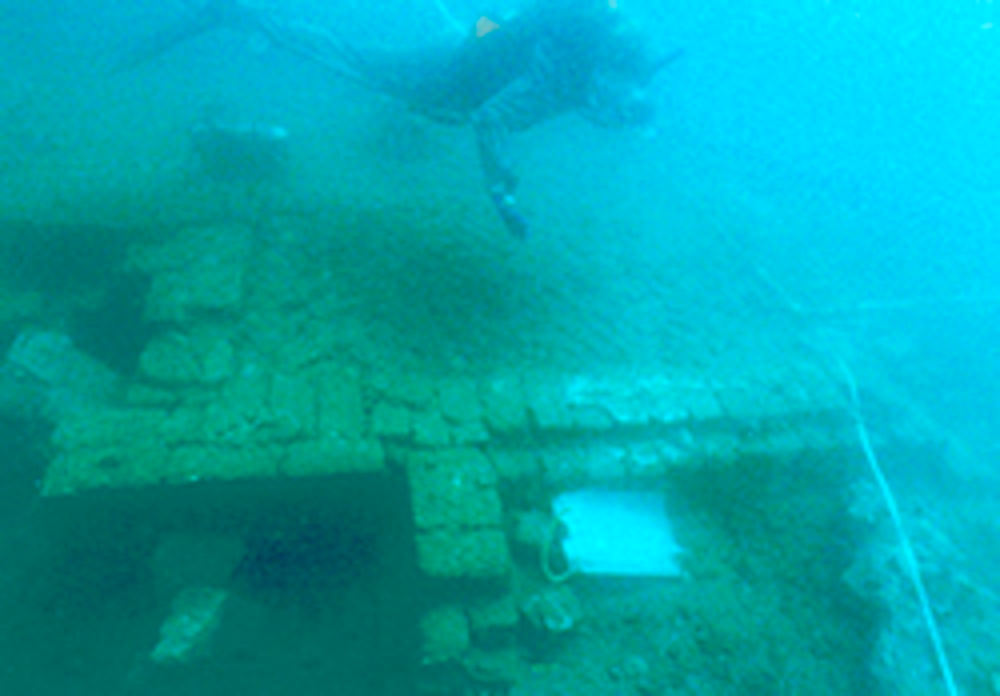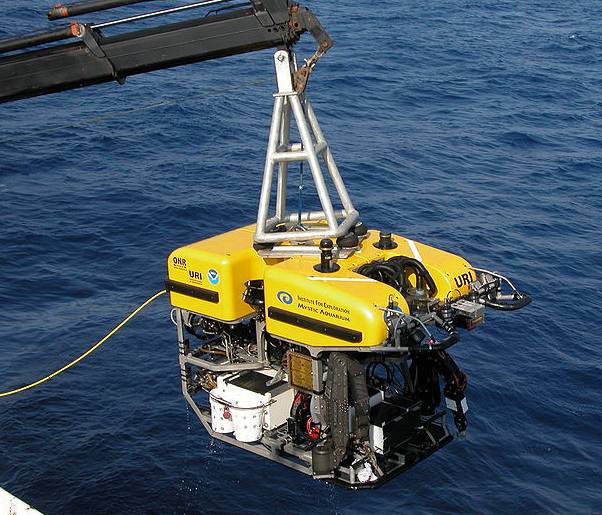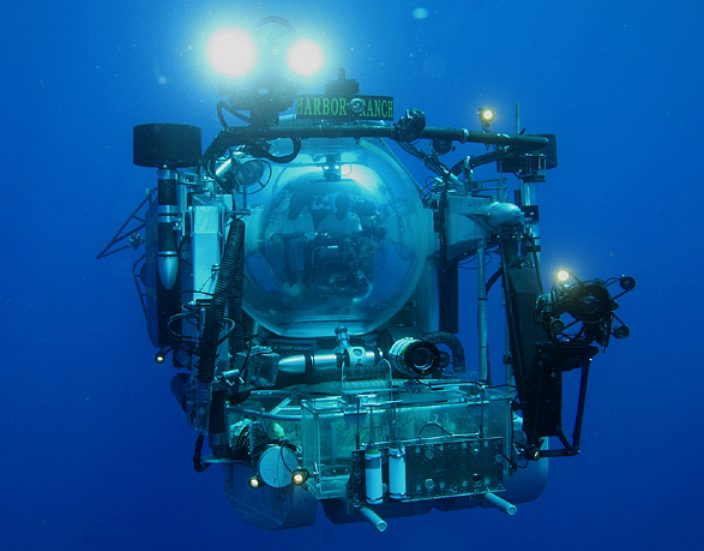
Surveying
and underwater exploration would not be possible without the
aqualung, or SCUBA diving gear, as it is commonly known. As
the equipment and training became more affordable, sport
diving was born as a recreational pastime. In the John
Storm series of ocean adventures, many of the characters
are capable divers: aquanauts.
SCUBA
gear, or the AquaLung, are both breathing apparatus that
allows a human to stay underwater for an hour or more,
depending on the depth of a subsea dive.
But
the human body is a complex biological machine, not as hardy
as we'd like, and we have not evolved (yet) to be able to
live underwater, from where all life on earth began. Strange
then that we should want to go back to our origins, except
that it is a lot of fun. And there is a lot of treasure to
be found, if that is your thing. Then again, marine
archaeology is the serious side of diving. Such as the
survey and raising of the Mary Rose. Henry
VIII's flagship that capsized in the Solent, because the
ship was top heavy with cannon.
Breathing
in unusual locations includes exploration in outer space,
where we also have not evolved to survive without
life-support equipment. Where below water on earth, is
called innerspace.
In outer space, astronauts need to have carefully calculated
supplies of oxygen, to match the missions they are sent on.
Diving underwater is comparatively easy, but there are still
rules to be learned, if you don't want to burst a lung or
eardrum. Or, suffer from the bends.
There
are many other problems with diving, that we suggest you
take the trouble to learn, and if you can, take a diving
course. To train properly for whatever underwater pursuit
you have in mind.

DEEP
DISCOVERER - The remotely operated vehicle, Deep Discoverer, being recovered after completing 19 dives during the Windows to the Deep 2019 expedition.
Image: Art Howard, Global Foundation for Ocean Exploration.
ROVs range in size from that of a small computer to
being as large as a small truck. Larger ROVs are very heavy and need other equipment such as a winch to put them over the side of a ship and into the water.
While using ROVs eliminates the “human presence” in the water, in most cases, ROV operations are simpler and safer to conduct than any type of occupied-submersible or diving operation because operators can stay
dry and warm, or safely on ship decks. ROVs allow underwater
investigation in areas that are too deep for humans to safely dive
themselves. And ROVs can stay underwater much longer than a human diver,
without decompression, making more time for exploration.
THE
HISTORY OF SCUBA DIVING
The history of scuba diving is closely linked with the history of the equipment. By the turn of the twentieth century, two basic architectures for underwater breathing apparatus had been pioneered; open-circuit surface supplied equipment where the diver's exhaled gas is vented directly into the water, and closed-circuit breathing apparatus where the diver's carbon dioxide is filtered from the exhaled breathing gas, which is then recirculated, and more gas added to replenish the oxygen content. Closed circuit equipment was more easily adapted to scuba in the absence of reliable, portable, and economical high pressure gas storage vessels. By the mid-twentieth century, high pressure cylinders were available and two systems for scuba had emerged: open-circuit scuba where the diver's exhaled breath is vented directly into the water, and closed-circuit scuba where the carbon dioxide is removed from the diver's exhaled breath which has oxygen added and is recirculated.
Oxygen rebreathers are severely depth limited due to oxygen toxicity risk, which increases with depth, and the available systems for mixed gas rebreathers were fairly bulky and designed for use with diving helmets. The first commercially practical scuba rebreather was designed and built by the diving engineer Henry Fleuss in 1878, while working for Siebe Gorman in London. His self contained breathing apparatus consisted of a rubber mask connected to a breathing bag, with an estimated 50–60% oxygen supplied from a copper tank and carbon dioxide scrubbed by passing it through a bundle of rope yarn soaked in a solution of caustic potash.
During the 1930s and all through World War II, the British, Italians and Germans developed and extensively used oxygen rebreathers to equip the first frogmen. In the U.S. Major Christian J. Lambertsen invented a free-swimming oxygen rebreather. In 1952 he patented a modification of his apparatus, this time named SCUBA, an acronym for "self-contained underwater breathing apparatus," which became the generic English word for autonomous breathing equipment for diving, and later for the activity using the equipment.
After World War
II, military frogmen continued to use rebreathers since they do not make bubbles which would give away the presence of the divers. The high percentage of
oxygen used by these early rebreather systems limited the depth at which they could be used due to the risk of convulsions caused by acute oxygen toxicity.
Although a working demand regulator system had been invented in 1864 by Auguste Denayrouze and Benoît Rouquayrol, the first open-circuit scuba system developed in 1925 by Yves Le Prieur in France was a manually adjusted free-flow system with a low endurance, which limited the practical usefulness of the system.
In 1942, during the German occupation of France, Jacques-Yves Cousteau and Émile Gagnan designed the first successful and safe open-circuit scuba, a twin hose system known as the Aqua-Lung. Their system combined an improved demand regulator with high-pressure air tanks. This was patented in 1945. To sell his regulator in English-speaking countries Cousteau registered the Aqua-Lung trademark, which was first licensed to the U.S. Divers company, and in 1948 to Siebe Gorman of England, Siebe Gorman was allowed to sell in Commonwealth countries, but had difficulty in meeting the demand and the U.S. patent prevented others from making the product.
The patent was circumvented by Ted Eldred of Melbourne, Australia, who developed the single-hose open-circuit scuba system, which separates the first stage and demand valve of the pressure regulator by a low-pressure hose, puts the demand valve at the diver's mouth, and releases exhaled gas through the demand valve casing. Eldred sold the first Porpoise Model CA single hose scuba early in 1952.
Early scuba sets were usually provided with a plain harness of shoulder straps and waist belt. Many harnesses did not have a backplate, and the cylinders rested directly against the diver's back. Early scuba divers dived without a buoyancy aid. In an emergency they had to jettison their weights. In the 1960s adjustable buoyancy life jackets (ABLJ) became available, which can be used to compensate for loss of buoyancy at depth due to compression of the neoprene wetsuit and as a lifejacket that will hold an unconscious diver face-upwards at the surface.
The first versions were inflated from a small disposable carbon dioxide cylinder, later with a small direct coupled air cylinder. A low-pressure feed from the regulator first-stage to an inflation/deflation valve unit an oral inflation valve and a dump valve lets the volume of the ABLJ be controlled as a buoyancy aid. In 1971 the stabilizer jacket was introduced by ScubaPro. This class of buoyancy aid is known as a buoyancy control device or buoyancy compensator. A backplate and wing is an alternative configuration of scuba harness with a buoyancy compensation bladder known as a "wing" mounted behind the diver, sandwiched between the backplate and the cylinder or cylinders. This arrangement became popular with cave divers making long or deep dives, who needed to carry several extra cylinders, as it clears the front and sides of the diver for other equipment to be attached in the region where it is easily accessible.
Sidemount is a scuba diving equipment configuration which has basic scuba sets, each comprising a single cylinder with a dedicated regulator and pressure gauge, mounted alongside the diver, clipped to the harness below the shoulders and along the hips, instead of on the back of the diver. It originated as a configuration for advanced cave diving, as it facilitates penetration of tight sections of cave, as sets can be easily removed and remounted when necessary. Sidemount diving has grown in popularity within the technical diving community for general decompression diving, and has become a popular specialty for recreational diving.
In the 1950s the United States Navy (USN) documented procedures for military use of what is now called nitrox, and in 1970, Morgan Wells, of (NOAA) began instituting diving procedures for oxygen-enriched air. In 1979 NOAA published procedures for the scientific use of nitrox in the NOAA Diving Manual. In 1985 IAND (International Association of Nitrox Divers) began teaching nitrox use for recreational diving. After initial resistance by some agencies, the use of a single nitrox mixture has become part of recreational diving, and multiple gas mixtures are common in technical diving to reduce overall decompression time. Nitrogen narcosis limits the depth when breathing nitrox mixtures.
In 1924 the US Navy started to investigate the possibility of using helium and after animal experiments, human subjects breathing heliox 20/80 (20% oxygen, 80% helium) were successfully decompressed from deep dives, Cave divers started using trimix to allow deeper dives and it was used extensively in the 1987 Wakulla Springs Project and spread to the north-east American wreck diving community. The challenges of deeper dives and longer penetrations and the large amounts of breathing gas necessary for these dive profiles and ready availability of oxygen sensing cells beginning in the late 1980s led to a resurgence of interest in rebreather diving. By accurately measuring the partial pressure of oxygen, it became possible to maintain and accurately monitor a breathable gas mixture in the loop at any depth. In the mid 1990s semi-closed circuit rebreathers became available for the recreational scuba market, followed by closed circuit rebreathers around the turn of the millennium. Rebreathers are currently (2018) manufactured for the military, technical and recreational scuba markets.

Where
human divers cannot go cost effectively, or safely for long
periods, submersibles and Remotely Operated Vessels (ROVs)
can be used at greater depths and in complete darkness. ROVs
are much cheaper than they used to be. An amateur set up
with reasonable range and camera equipment can be at little
as $500-2000 dollars. More professional equipment is in the
$50,000 dollar range. With large professional equipment
costing $millions.

ROVs
or UUVs - Are generally smaller unmanned underwater vessels,
than their crewed counterparts,
without life support, making them cheaper to build and
operate.


